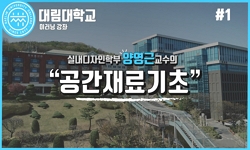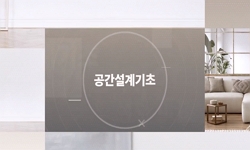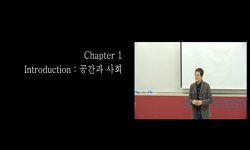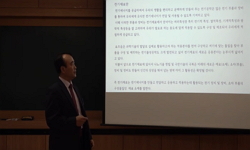As a result of examining the immaterial expression characteristics of Ryue Nishizawa’s work, the following conclusions were reached within the scope of this study. 1. In Nishizawa"s work, immaterial expressions appeared in terms of material aspec...
http://chineseinput.net/에서 pinyin(병음)방식으로 중국어를 변환할 수 있습니다.
변환된 중국어를 복사하여 사용하시면 됩니다.
- 中文 을 입력하시려면 zhongwen을 입력하시고 space를누르시면됩니다.
- 北京 을 입력하시려면 beijing을 입력하시고 space를 누르시면 됩니다.
https://www.riss.kr/link?id=A105601233
- 저자
- 발행기관
- 학술지명
- 권호사항
-
발행연도
2018
-
작성언어
Korean
-
주제어
니시자와류에(西?立衛) ; 비물질성 ; 재료 ; 형태 ; 공간 ; Ryue Nishizawa ; immateriality ; material ; form ; space
-
등재정보
KCI등재
-
자료형태
학술저널
- 발행기관 URL
-
수록면
61-74(14쪽)
-
KCI 피인용횟수
0
- DOI식별코드
- 제공처
-
0
상세조회 -
0
다운로드
부가정보
다국어 초록 (Multilingual Abstract)
As a result of examining the immaterial expression characteristics of Ryue Nishizawa’s work, the following conclusions were reached within the scope of this study.
1. In Nishizawa"s work, immaterial expressions appeared in terms of material aspect, morphological aspect, and spatial aspect. In terms of material, the transparency of glass and the metaphor by white color appeared, and in the morphological aspect, the dynamic form of beyond-gravity of the scalpel appeared. Finally, in terms of space, beyond-boundary characteristics appeared in the interior space, between the interior space and the outer space, and between the outer space and the outer space around the earth. 2. The characteristics of the material aspect and the characteristics of the morphological aspect eventually play a role of the composition and background elements that form the characteristics of the spatial aspect. 3. Such immaterial expressions can be divided into three types according to the expression type. First, in the case of the same type as the one-room type, expressions that acquire beyond-bounding in the internal space due to the transparency of the glass wall appear in the material aspect. Secondly, the separated scalpel and the connection space are separated into several pieces, and the de-bounding between the inner and outer spaces appears due to the transparency of the glass wall in the other mouths that exist in the large outer wall. The third is in the form of a single individual inserted into the atmosphere of the surrounding environment, where beyond-gravity is mainly seen in the morphological aspect. Consequently, the glass wall-a functional boundary inside-disappears and the curved ceiling or floor surface based on the terrain is formed, and the beyond-borderline is found between interior spaces, between interor and exterior spaces and between exterior spaces(in the site, out of the site). 4. Immaterial expression characteristics tend to change from indirect method by material side of the component to direct method of morphological aspect of the building scalpel. 5. He has been working on landscape expression to provide the possibility of a relationship that can be held in free and diverse spaces through the above immaterial expression method and to create an architectural space in harmony with the terrain and surrounding environment.
목차 (Table of Contents)
- Abstract
- Ⅰ. 서론
- Ⅱ. 건축철학 및 표현경향
- Ⅲ. 사례조사 및 비물질적 표현
- Ⅳ. 분석
- Abstract
- Ⅰ. 서론
- Ⅱ. 건축철학 및 표현경향
- Ⅲ. 사례조사 및 비물질적 표현
- Ⅳ. 분석
- Ⅴ. 결론
- 참고문헌
참고문헌 (Reference)
1 김동영, "한국・일본 전통 상류주택의 비물질적 표현특성 비교" 한국주거환경학회 13 (13): 101-112, 2015
2 김동영, "일본 전통 상류주택의 비물질적 표현 특성" 한국주거환경학회 12 (12): 167-175, 2014
3 西沢立衛, "続 建築について話してみよう" 王国社 2012
4 西沢立衛, "日経アーキテクチュア" 日経BP社 2011
5 西沢立衛, "建築のプロセス" エ-ディ-エ-‧ エディタ‧ ト-キョ- 2013
6 西沢立衛, "建築について話してみよう" 王国社 2007
7 二川由夫, "妹島和世+西沢立衛 読本-2013" エ-ディ-エ-‧エディタ‧ ト-キョ- 2013
1 김동영, "한국・일본 전통 상류주택의 비물질적 표현특성 비교" 한국주거환경학회 13 (13): 101-112, 2015
2 김동영, "일본 전통 상류주택의 비물질적 표현 특성" 한국주거환경학회 12 (12): 167-175, 2014
3 西沢立衛, "続 建築について話してみよう" 王国社 2012
4 西沢立衛, "日経アーキテクチュア" 日経BP社 2011
5 西沢立衛, "建築のプロセス" エ-ディ-エ-‧ エディタ‧ ト-キョ- 2013
6 西沢立衛, "建築について話してみよう" 王国社 2007
7 二川由夫, "妹島和世+西沢立衛 読本-2013" エ-ディ-エ-‧エディタ‧ ト-キョ- 2013
동일학술지(권/호) 다른 논문
-
공공택지개발사업지구 내 상업용지의 공급가격과 낙찰가격 비교연구
- 한국주거환경학회
- 홍진석(Hong, Jin Seok)
- 2018
- KCI등재
-
- 한국주거환경학회
- 김진(Kim, Jin)
- 2018
- KCI등재
-
- 한국주거환경학회
- 전해정(Chun, Hae Jung)
- 2018
- KCI등재
-
신탁부동산의 임대차 관계에서 임차인의 권리보호에 관한 연구
- 한국주거환경학회
- 장현학(Jang, Hyun Hak)
- 2018
- KCI등재
분석정보
인용정보 인용지수 설명보기
학술지 이력
| 연월일 | 이력구분 | 이력상세 | 등재구분 |
|---|---|---|---|
| 2026 | 평가예정 | 재인증평가 신청대상 (재인증) | |
| 2020-01-01 | 평가 | 등재학술지 유지 (재인증) |  |
| 2017-01-01 | 평가 | 등재학술지 유지 (계속평가) |  |
| 2013-01-01 | 평가 | 등재 1차 FAIL (등재유지) |  |
| 2010-01-01 | 평가 | 등재학술지 선정 (등재후보2차) |  |
| 2009-01-01 | 평가 | 등재후보 1차 PASS (등재후보1차) |  |
| 2007-01-01 | 평가 | 등재후보학술지 선정 (신규평가) |  |
학술지 인용정보
| 기준연도 | WOS-KCI 통합IF(2년) | KCIF(2년) | KCIF(3년) |
|---|---|---|---|
| 2016 | 0.8 | 0.8 | 0.83 |
| KCIF(4년) | KCIF(5년) | 중심성지수(3년) | 즉시성지수 |
| 0.87 | 0.86 | 0.868 | 0.25 |





 KCI
KCI 스콜라
스콜라






